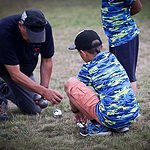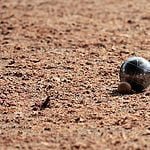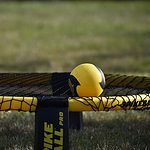If you've ever wondered about the intricate details behind making a cornhole board, there's a fascinating process waiting for you to discover.
Starting with selecting the right materials and tools, you can embark on a journey of crafting a custom cornhole board that reflects your style and personality.
But before you dive into the nitty-gritty of construction, there's a crucial aspect to consider that can elevate your cornhole game to a whole new level.
Stay tuned to uncover this essential step that can make a significant difference in your DIY project.
Key Takeaways
- Select quality materials like plywood and specific wood types for durability.
- Build a sturdy frame with angled 2x4s and secure attachments for stability.
- Cut precise holes, sand, and finish for smooth gameplay and visual appeal.
- Maintain, customize, and follow regulations for optimal cornhole board use.
Materials Needed
What specific materials do you need to craft a high-quality cornhole board with precision and durability?
To create a DIY cornhole board, you'll require specific materials such as 1/2-inch plywood for the top surface, specific wood types for the frame, and fasteners to hold everything together securely.
Ensuring that the plywood is of good quality will contribute to the durability of the board. When constructing the legs, front, back, and sides, it's crucial to adhere to the specific dimensions provided. This includes cutting the 2x4s at a 25-degree angle for stability and proper assembly.
During the assembly process, positioning the boards correctly and using self-drilling screws or pilot holes will help in creating a sturdy structure. When attaching the top, make sure to secure the plywood tops with wood screws and accurately cut the hole using a hole saw.
For a professional finish, drilling holes in the legs, cutting them at a 45-degree angle, and rounding off corners with sandpaper will enhance the board's overall stability and aesthetic appeal.
Cutting the Wood
To achieve precise cuts when crafting a cornhole board, utilize a circular saw to cut the plywood into two sections measuring 24 x 48 inches each. These pieces will serve as the top and bottom surfaces of your board. When making these cuts, ensure the blade is sharp to avoid splintering the wood. Measure twice, cut once to keep the dimensions accurate.
Next, cut the 2x4s into specific lengths for the frame, legs, and support pieces according to your design specifications. Make sure to measure meticulously and use a square to guarantee straight cuts. For added stability and aesthetics, make a 3-1/2 radius cut on one end of each leg. This detail won't only enhance the look of your board but also contribute to its overall balance.
Building the Frame
Construct the frame for your cornhole board by assembling the 2x4s into a sturdy box structure. Start by cutting the 2x4s to create a frame that matches the dimensions of your plywood pieces, ensuring a snug fit. Use 21-inch pieces inside the 48-inch ones to build the frame's perimeter.
Cut the legs to 11-1/2 inches, then drill holes to securely attach them to the frame. To enhance stability, cut angles at the bottom of the legs, allowing them to sit flush on the ground. Use carriage bolts to fasten the legs to the frame firmly. This step is crucial in providing a solid base for your cornhole board.
Ensuring precise measurements and secure connections during the frame construction will lay the foundation for a durable and reliable playing surface. Next, you'll proceed to cutting holes for the bags, which will add the finishing touch to your cornhole board.
Cutting Holes for Bags
For precise and consistent gameplay, ensure the standard 6-inch diameter holes on your cornhole board are positioned accurately. To achieve this, follow these steps with meticulous care:
- Use a Hole Saw: Employ a hole saw attachment on a drill to ensure a precise and clean cut for the holes.
- Positioning: Place the holes 9 inches from the top and center them 12 inches from each side edge for regulation play.
- Smooth Surface: After cutting the holes, sand the edges to create a smooth surface that prevents bags from snagging or bouncing out during play.
- Scoring Points: Remember that cornhole board holes aren't just for aesthetics; they play a crucial role in scoring points and adding an element of challenge to the game.
Attaching the Legs
With the holes expertly cut and positioned on your cornhole board, the next crucial step in crafting a sturdy and reliable playing platform is attaching the legs securely and evenly.
To ensure stability and proper height, cut the legs to 11-1/2 inches in length, making a 3-1/2 radius cut on one end of each leg for a smooth finish. Drill holes through the box and legs to attach them securely using carriage bolts and wing nuts. Cutting angles on the bottom of the legs is essential to prevent wobbling during gameplay.
It's crucial to attach the legs evenly and securely to the cornhole board to guarantee a safe and durable playing surface. By following these precise steps and paying attention to detail, you'll create a cornhole board that not only looks professional but also offers exceptional durability and stability, providing hours of fun for you and your friends.
Sanding and Priming
Smooth the entire surface of the cornhole board with medium-grit sandpaper to ensure a uniform finish, paying close attention to edges and corners. This step is crucial to guarantee a professional and flawless final product. Proper sanding prepares the board for the next stages of priming and painting.
- Sand: Use medium-grit sandpaper to smooth out any rough areas or imperfections on the board.
- Edges and Corners: Focus on these areas while sanding to achieve a consistent and polished look.
- Wipe Down: After sanding, wipe the board with a damp cloth to eliminate any dust or debris before applying primer.
- Primer: Select a high-quality primer suitable for outdoor use to establish a durable and long-lasting base for painting.
Painting the Board
Prepare the cornhole board by ensuring a smooth and primed surface before embarking on the painting process for a professional and durable finish. Begin by sanding the surface to eliminate any rough spots, ensuring a flawless base for the paint. Opt for outdoor-rated paint to guarantee longevity and weather resistance, crucial for withstanding outdoor conditions. Before painting, apply a primer coat to enhance adhesion and coverage, setting the stage for a vibrant finish.
When painting designs or patterns on the board, utilize painter's tape to achieve crisp lines and precise edges, adding a touch of craftsmanship to your creation. Once the paint has dried, seal the board with a clear sealant to protect the design and ensure durability over time. This final step not only safeguards the paint but also adds an extra layer of weather resistance, making your cornhole board ready for endless games outdoors.
Adding Finishing Touches
To elevate the visual appeal and functionality of your cornhole board, focus on adding meticulous finishing touches that enhance both aesthetics and playability. Start by sanding the edges and surfaces of the board to achieve a smooth finish that not only looks great but also improves gameplay.
Next, apply a protective coat of paint or sealant to shield the boards from outdoor elements, ensuring their durability in various weather conditions. Consider adding decals or designs to personalize your cornhole boards, making them unique and eye-catching.
It's crucial to ensure your boards meet regulation standards, including the correct dimensions, hole size, and placement for official gameplay. By paying attention to these finishing touches, you'll have cornhole boards that not only look fantastic but also provide a high-quality playing experience.
Enjoy the satisfaction of playing on your carefully crafted and visually appealing cornhole boards!
Cornhole Board Maintenance
Regularly inspect your cornhole board for any signs of wear, damage, or loose components to ensure optimal performance and longevity. Keeping your board well-maintained is essential for a great playing experience. Here are some key maintenance tips to help you care for your cornhole board:
| Maintenance Task | Description | Frequency |
|---|---|---|
| Inspect | Check for wear, damage, loose parts | Monthly |
| Clean | Wipe with damp cloth or mild soap | After each use |
| Stability Check | Ensure legs and frame are sturdy | Before each use |
| Tighten | Secure loose screws or bolts | As needed |
| Store | Keep in dry, covered area | Always |
Enjoying Your DIY Board
Enhance your DIY cornhole board experience by utilizing personalized designs and protective finishes to elevate both aesthetics and durability. Here are some tips to fully enjoy your DIY cornhole board:
- Customize Your Board: Add a personal touch with paint, decals, or unique designs to make your board stand out during gameplay.
- Ensure Regulation Size: Make sure your board is 2ft x 4ft with a 6-inch hole to adhere to standard cornhole gameplay rules.
- Apply a Protective Finish: Extend the lifespan of your board by applying a protective finish like urethane or polyurethane to shield it from wear and tear.
- Master Scoring Rules: Familiarize yourself with scoring rules to enhance the competitive spirit and enjoyment of the game with friends and family.





